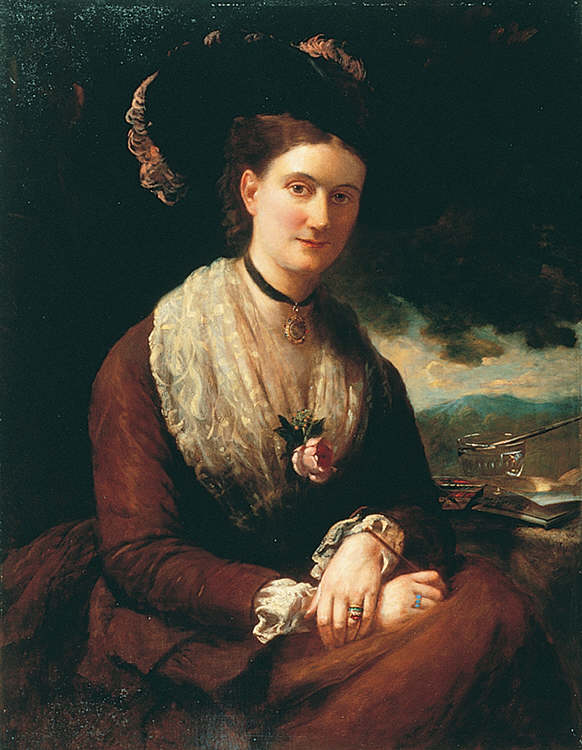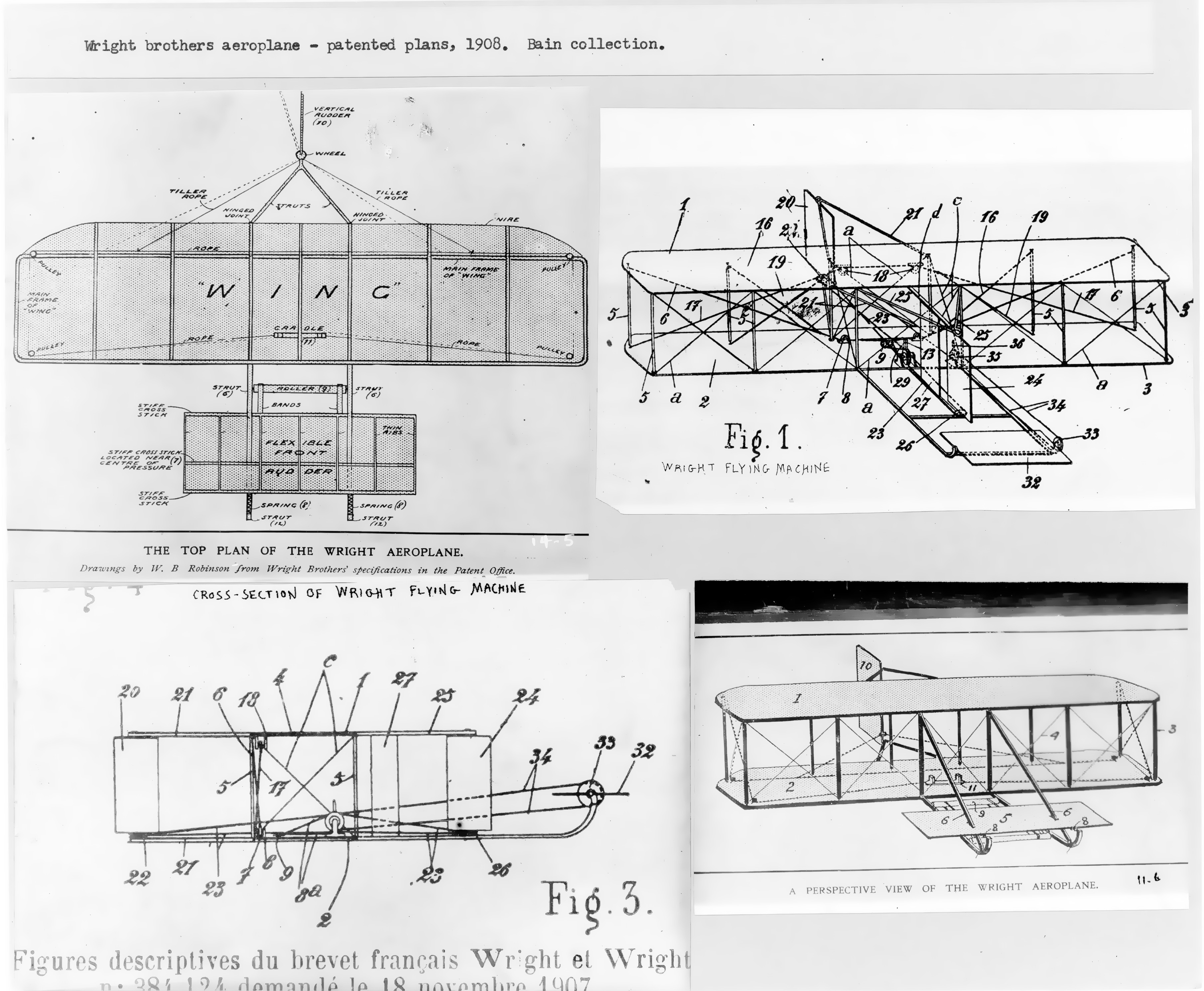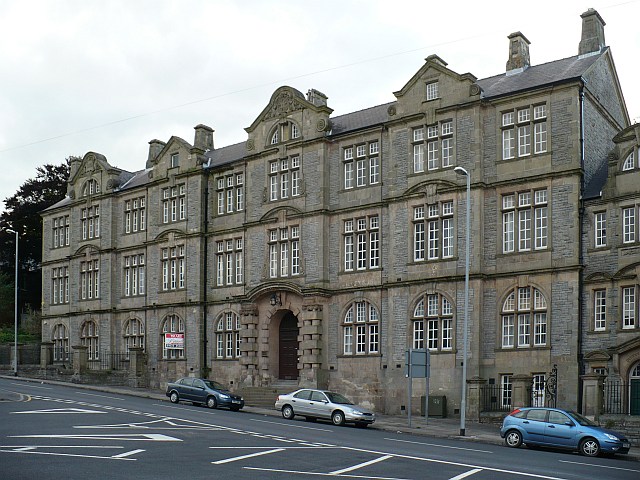|
The Nelson Rooms, Monmouth
The Nelson Rooms is a grade II listed building in Monmouth, Monmouthshire, Wales. It is in the historic Glendower Street, Monmouth, Glendower Street and Agincourt Street neighbourhood, within the Monmouth Town Walls and Defences, medieval town walls. The building initially served as a gymnasium and was a gift from Lady Llangattock to the town of Monmouth. In 1924, after the benefactor's death, it reopened as the Monmouth Museum, Nelson Museum, and showcased the collection of memorabilia related to Admiral Horatio Nelson that had been amassed by the baroness. The Nelson Museum moved to new quarters at the Market Hall, Monmouth, Market Hall in 1969. The former gymnasium and museum is now an apartment building. History The Nelson Rooms at 2 Glendower Street in Monmouth is a 19th-century, grade II listed building. It is located at the corner of Glendower Street and Agincourt Street, within the medieval town walls. The street on which it is situated was referred to as Grinders Street ... [...More Info...] [...Related Items...] OR: [Wikipedia] [Google] [Baidu] |
Monmouth Museum
The Monmouth Museum, alternatively known as The Nelson Museum and Local History Centre, is a museum in Monmouth, Monmouthshire, south east Wales. It features a collection of artifacts associated with Admiral Horatio Nelson. The museum is located in the old Market Hall in the town centre in Monmouth, a short distance from the River Monnow, Monmouth Castle, and Agincourt Square. History The Nelson collection was a bequest to the town of Monmouth upon the 1923 death of Lady Georgiana Llangattock, wife of local landowner and town benefactor, John Rolls, 1st Baron Llangattock, and mother of Charles Rolls, who had amassed a collection of Admiral Horatio Nelson memorabilia during the late nineteenth and early twentieth centuries. In the late nineteenth century, Lady Llangattock donated a gymnasium in Glendower Street to the town of Monmouth. After her death, the gymnasium reopened as the Nelson Museum in 1924. The museum moved to new quarters in 1969; the building which initially ... [...More Info...] [...Related Items...] OR: [Wikipedia] [Google] [Baidu] |
Wright Flyer
The ''Wright Flyer'' (also known as the ''Kitty Hawk'', ''Flyer'' I or the 1903 ''Flyer'') made the first sustained flight by a manned heavier-than-air powered and controlled aircraft—an airplane—on December 17, 1903. Invented and flown by Orville and Wilbur Wright, it marked the beginning of the pioneer era of aviation. The Wright brothers flew the ''Wright Flyer'' four times that day on land now part of the town of Kill Devil Hills, about south of Kitty Hawk, North Carolina. The aircraft was preserved and is now exhibited in the National Air and Space Museum in Washington, D.C. Design and construction The ''Flyer'' was based on the Wrights' experience testing gliders at Kitty Hawk between 1900 and 1902. Their last glider, the 1902 Glider, led directly to the design of the ''Wright Flyer''. The Wrights built the aircraft in 1903 using spruce for straight members of the airframe (such as wing spars) and ash wood for curved components (wing ribs). The wings were desi ... [...More Info...] [...Related Items...] OR: [Wikipedia] [Google] [Baidu] |
Rubble
Rubble is broken stone, of irregular size, shape and texture; undressed especially as a filling-in. Rubble naturally found in the soil is known also as 'brash' (compare cornbrash)."Rubble" def. 2., "Brash n. 2. def. 1. ''Oxford English Dictionary'' Second Edition on CD-ROM (v. 4.0) © Oxford University Press 2009 Where present, it becomes more noticeable when the land is ploughed or worked. Building "Rubble-work" is a name applied to several types of masonry. One kind, where the stones are loosely thrown together in a wall between boards and grouted with mortar almost like concrete, is called in Italian "muraglia di getto" and in French "bocage". In Pakistan, walls made of rubble and concrete, cast in a formwork, are called 'situ', which probably derives from Sanskrit (similar to the Latin 'in situ' meaning 'made on the spot'). Work executed with more or less large stones put together without any attempt at courses is called rubble walling. Where similar work is laid in cour ... [...More Info...] [...Related Items...] OR: [Wikipedia] [Google] [Baidu] |
Gable
A gable is the generally triangular portion of a wall between the edges of intersecting roof pitches. The shape of the gable and how it is detailed depends on the structural system used, which reflects climate, material availability, and aesthetic concerns. The term gable wall or gable end more commonly refers to the entire wall, including the gable and the wall below it. Some types of roof do not have a gable (for example hip roofs do not). One common type of roof with gables, the gable roof, is named after its prominent gables. A parapet made of a series of curves (Dutch gable) or horizontal steps (crow-stepped gable) may hide the diagonal lines of the roof. Gable ends of more recent buildings are often treated in the same way as the Classic pediment form. But unlike Classical structures, which operate through trabeation, the gable ends of many buildings are actually bearing-wall structures. Gable style is also used in the design of fabric structures, with varying degree ... [...More Info...] [...Related Items...] OR: [Wikipedia] [Google] [Baidu] |
Monmouthshire County Council
Monmouthshire County Council (or simply Monmouthshire Council) ( cy, Cyngor Sir Fynwy) is the governing body for the Monmouthshire principal area – one of the unitary authorities of Wales. The current unitary authority was created in 1996 and covers the eastern three-fifths of the historic county of Monmouthshire. The county council is based at County Hall in the hamlet of The Rhadyr, near Usk. Since the 2022 elections the council has been under no overall control, with Labour the largest party. The leader of the council since the 2022 elections has been Mary Ann Brocklesby of Labour. History The current Monmouthshire County Council is the second body of that name. The first Monmouthshire County Council was created in 1889 under the Local Government Act 1888, taking over the local government functions of the quarter sessions. That council was based in Newport, initially meeting at the town hall and later building itself headquarters at Shire Hall in 1902. From 1891 New ... [...More Info...] [...Related Items...] OR: [Wikipedia] [Google] [Baidu] |
Monk Street, Monmouth
Monk Street is an historic street in the town of Monmouth, Monmouthshire, Wales. A portion of it was in existence by the 14th century, and appears on the 1610 map of the town by cartographer John Speed. It runs in a north-south direction, extending northward from its intersection with Whitecross Street. The name of the street relates to the nearby Priory, as well as the gate which was originally on this road and provided part of the town's defences, Monk's Gate. Monk Street is lined with numerous listed buildings. History and location By the 14th century, a portion of the street plan of Monmouth had been determined. It is believed that Monk Street derived its name from the nearby Priory. On the map of the town of Monmouth ''(pictured)'' created by John Speed in 1610, Monk Street extends from its intersection with Whitecross Street northward to Monk's Gate. Monk's Gate was a component of the town's defences. While the gates of the town outlasted the walls themselves, Monk's Gat ... [...More Info...] [...Related Items...] OR: [Wikipedia] [Google] [Baidu] |
Monmouth Baptist Church
Monmouth Baptist Church is located in Monk Street, Monmouth, south east Wales. The church building was opened in 1907, although the Baptist congregation had been formed in 1818. The church became a Grade II listed building on 27 October 1998. History The congregation formed in 1818, after several ministers from associated churches visited the town. The church originally met in a small building, just off Monnow Street. The first pastor was appointed in 1831, and the original meeting place was enlarged in 1836 to form a chapel.Keith Kissack''Nonconformity in Monmouth'' Capel: The Chapels Heritage Society Newsletter, no.29, 1997Keith Kissack, ''Monmouth and its Buildings'', Logaston Press, 2003, , p.82 After becoming derelict, it was demolished in recent years to make way for a supermarket car park. . Accessed 23 January 2012 The foundations of a ... [...More Info...] [...Related Items...] OR: [Wikipedia] [Google] [Baidu] |
1 Monk Street, Monmouth
1 Monk Street, Monmouth was built as a Working Men's Free Institute. It is a Grade II Listed building in Monmouth, Wales and located next to Monmouth Baptist Church. The architect was Benjamin Lawrence of NewportJohn Newman, ''The Buildings of Wales: Gwent/Monmouthshire'', Penguin Books, 2000, , p.399 who later designed the church next door. The institute's staircase was made by Macfarlane, Glasgow, Wrought Ironwork was by Cormell Cheltenham and the carvings were by J Willis. The building opened in 1868. A smoking room and lecture room were added in 1897.Keith Kissack, ''Monmouth and its Buildings'', Logaston Press, 2003, , page 146 History Mrs. Matilda Jones (died 1874) of Ancre Hill financed the Institutes construction. It opened its doors on 15 October 1868 following a procession to Ancre Hill, then the home of Matilda Jones, of working men headed by a Military band and accompanied by the friendly Societies with their banners. The purpose of the construction was to provide ... [...More Info...] [...Related Items...] OR: [Wikipedia] [Google] [Baidu] |
Newport, Wales
Newport ( cy, Casnewydd; ) is a city and Local government in Wales#Principal areas, county borough in Wales, situated on the River Usk close to its confluence with the Severn Estuary, northeast of Cardiff. With a population of 145,700 at the 2011 census, Newport is the third-largest authority with City status in the United Kingdom, city status in Wales, and seventh List of Welsh principal areas, most populous overall. Newport became a unitary authority in 1996 and forms part of the Cardiff-Newport metropolitan area. Newport was the site of the last large-scale armed insurrection in Great Britain, the Newport Rising of 1839. Newport has been a port since medieval times when the first Newport Castle was built by the Normans. The town outgrew the earlier Roman Britain, Roman town of Caerleon, immediately upstream and now part of the borough. Newport gained its first Municipal charter, charter in 1314. It grew significantly in the 19th century when its port became the focus of Coa ... [...More Info...] [...Related Items...] OR: [Wikipedia] [Google] [Baidu] |
Horatio Nelson, 1st Viscount Nelson
Vice-Admiral Horatio Nelson, 1st Viscount Nelson, 1st Duke of Bronte (29 September 1758 – 21 October 1805) was a British flag officer in the Royal Navy. His inspirational leadership, grasp of strategy, and unconventional tactics brought about a number of decisive British naval victories during the French Revolutionary and Napoleonic Wars. He is widely regarded as one of the greatest naval commanders in history. Nelson was born into a moderately prosperous Norfolk family and joined the navy through the influence of his uncle, Maurice Suckling, a high-ranking naval officer. Nelson rose rapidly through the ranks and served with leading naval commanders of the period before obtaining his own command at the age of 20, in 1778. He developed a reputation for personal valour and firm grasp of tactics, but suffered periods of illness and unemployment after the end of the American War of Independence. The outbreak of the French Revolutionary Wars allowed Nelson to return to service, ... [...More Info...] [...Related Items...] OR: [Wikipedia] [Google] [Baidu] |
Hyam's Mineral Water Works
Hyam's Mineral Water Works is a nineteenth century building at 23 Glendower Street, Monmouth, Wales. Formerly a mineral water works, it is currently used as residential apartments. The building holds one of the 24 blue plaques awarded by the Monmouth Civic Society to buildings of especial historical and social interest, and features on the Monmouth Heritage Trail. History A mineral water works, for the manufacture of soda water, lemonade and ginger beer, was established in Glendower Street in 1866 by Thomas E. Hyam, a leading figure in nineteenth century Monmouth. He was a corn and timber merchant, saw mill owner, and shop owner, who became Monmouth's mayor in 1875/6 and was also a Justice of the Peace. To quote Keith Kissack, "No committee or association was considered complete unless it included his name". Residences in Monmouth associated with the Hyam family were Cornwall House in Monnow Street and Parade House on North Parade. In 1870, the Duke of Beaufort commended his ... [...More Info...] [...Related Items...] OR: [Wikipedia] [Google] [Baidu] |







